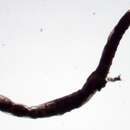Cognettia: Brief Summary
provided by wikipedia EN
Cognettia is a genus of annelids belonging to the family Enchytraeidae.
The genus has almost cosmopolitan distribution.
Species:
Cognettia alsoae (Martinsson, Klinth & Erséus, 2018)
Cognettia baekrokdamensis (Dózsa-Farkas, Felföldi, Nagy & Hong, 2018)
- license
- cc-by-sa-3.0
- copyright
- Wikipedia authors and editors
Status
provided by World Register of Marine Species
Schmelz et al (2015), in an application to the ICZN, explains how the widely used genus name Cognettia of Nielsen & Christensen, published 1959, is junior to the unused names Euenchytraeus Bretscher, 1906 and Chamaedrilus Friend, 1913. The trigger for the application may have been the article of Martinsson et al. (2015). Those authors re-established Chamaedrilus and Euenchytraeus, and distributed the species previously included in Cognettia amongst these two genera. The two species with head nephridia were assigned to Euenchytraeus, and its type species Euenchytraeus bisetosus (previously a ‘species dubia’) was restored. The rest – Cognettia sphagnetorum included – were included in Chamaedrilus. The species name chlorophilus was revalidated based on combined morphological and molecular studies and the re-investigation of voucher specimens, which the authors considered to be syntypes of Chamaedrilus chlorophilus; chlorophilus and sphagnetorum were hence no longer considered as synonyms. Cognettia sphagnetorum auct. was split into four species, two of them new to science, and a neotype for the newly limited concept of Ch. sphagnetorum was designated. The ICZN accepted the arguments in favour of preserving Cognettia, and so Euenchytraeus and Chamaedrilus must be treated as junior to it when regarded as synonyms. This ruling presumably would not prevent the latter genera being later used as subgenera of Cognettia, or as separate genera should there be a distinction established between them. It does conserve Cognettia as a name. Before the ICZN had published its Opinion 2423 in 2018 Martinsson et al (2017) published a molecular paper showing that taxa they placed in Chamaedrilus and Euenchytraeus were closely related but separate (the Euenchytraeus species they tested was not the type species of Euenchytraeus). Importantly their specimens of the type species of Cognettia, Cognettia sphagnetorum as their Chamaedrilus sphagnetorum, appeared grouped with the other Chamaedrilus species they included in their analysis. Thus Chamaedrilus and Cognettia are not distinct. Cognettia is junior but takes precedence by ICZN decision.
- Schmelz, R. M.; Collado, R.; Römbke, J. (2015). Case 3689 Cognettia Nielsen & Christensen, 1959 (Annelida, Oligochaeta, enchytraeidae): proposed precedence over Euenchytraeus Bretscher, 1906 and Chamaedrilus Friend, 1913. The Bulletin of Zoological Nomenclature. 72(3): 186-192.
- Martinsson, Svante, Rota, Emilia and Erseus, Christer. (2015). Revision of Cognettia (Clitellata, Enchytraeidae): re-establishment of Chamaedrilus and description of cryptic species in the sphagnetorum complex. Systematics and Biodiversity. 13(3): 257-277.
- Martinsson, S.; Dózsa-Farkas, K.; Rota, E.; Erséus, C. (2017). Placing the forgotten: on the positions of Euenchytraeus and Chamaedrilus in an updated enchytraeid phylogeny (Clitellata : Enchytraeidae). Invertebrate Systematics. 31(1): 85.
- license
- cc-by-4.0
- copyright
- WoRMS Editorial Board

